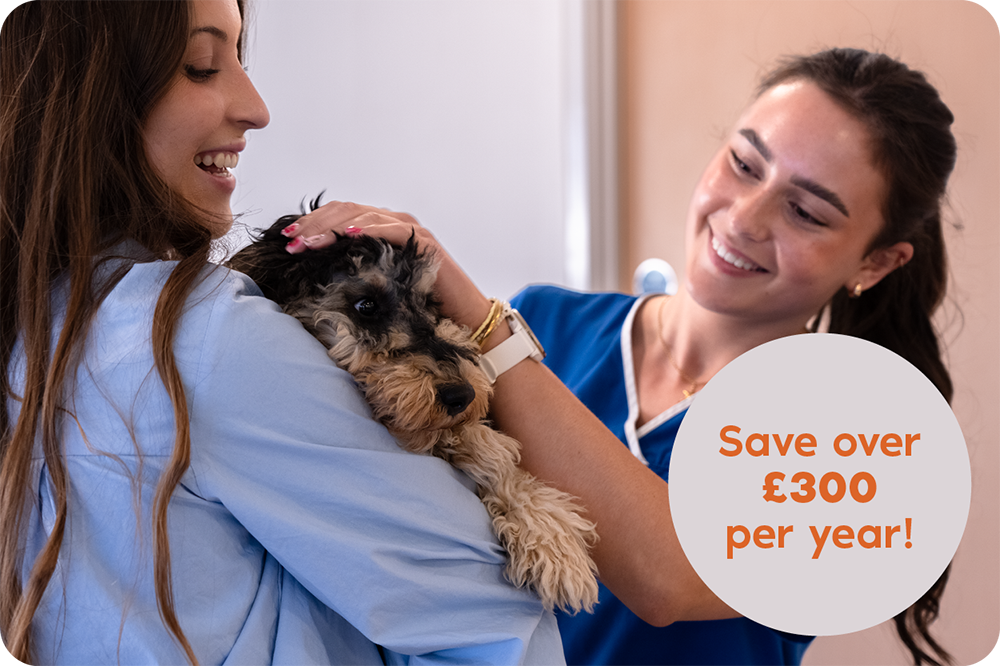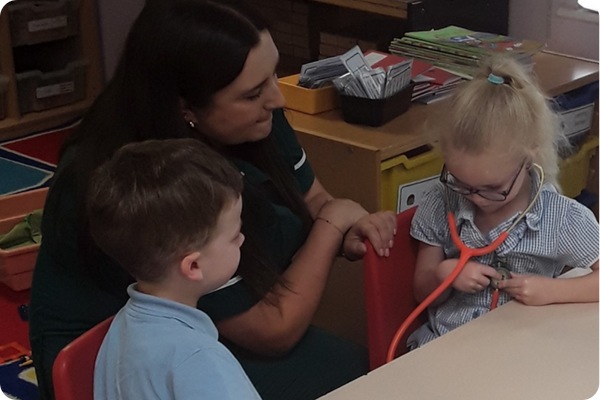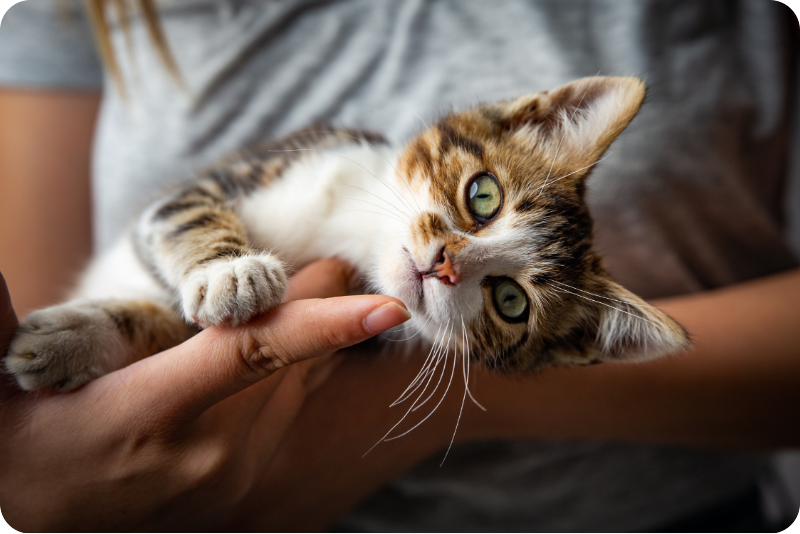Rabbits are curious creatures that bring joy and companionship to any home. As herbivores with unique needs, they require specialized care that’s different from more traditional pets like cats or dogs. Whether you’re a first-time rabbit owner or an experienced rabbit owner, this guide will walk you through essential tips and advice to help you provide the best possible care for your furry friend.
Quick Links
Housing
Traditionally, rabbits have been kept in hutches. Nowadays, we understand that rabbits need plenty of exercise, so keeping them shut away for most of the time is not appropriate! Rabbits may be kept indoors, outdoors, or a mixture of the two.
Outdoor Rabbits
Whilst a hutch may be a cosy place for rabbits to sleep, they must have enough space that they can also have separate areas to eat and go to the toilet. A rabbit’s living area should be protected from the weather (either in a sheltered spot near a house, or inside a shed) and away from any loud noises. They should also be kept away from any potential predators such as cats, dogs or ferrets.
Ideally, we recommend that rabbits have access to a run at all times, so they can come and go as they wish. A run at least 6 foot by 8 foot will allow your rabbits room to run, jump and explore. The run must be completely enclosed to be sure no predators can get in, and keep an eye out for your rabbits trying to dig their way out!
If it is not possible to connect their living area to their run, your rabbit should spend most of the day outside when the weather permits. In this situation, it is important to make sure they have access to food (if there is no grass, then provide hay), clean water and a sheltered space to hide from the weather or from potential predators.
Indoor Rabbits
Rabbits can be kept indoors, but ideally they should have some time outside during the day, especially over the summer. As with outdoor rabbits, their living area must have separate areas for sleeping, eating, and toileting.
Rabbits evolved to spend most of their day chewing, and are not fussy about what they put in their mouths! They are often keen to chew on electrical plugs and cables, so extra care must be taken to make sure they do not have access to these, as this can be harmful to their health. Nibbling at rugs or carpet should also be avoided as the fibres can become lodged in their intestines and cause a blockage.
Companionship
Rabbits are social creatures, and should be kept in pairs or groups. Other animals such as guinea pigs are generally not good companions as they may pass diseases to each other, and have different dietary needs and socialize in different ways.
The best way to keep rabbits is as bonded pairs. A neutered male and a neutered female are most likely to live best together but pairs of the same sex may also live together, depending on their temperament.
If you have a single rabbit that is looking for a companion, many rescue organisations will help with “bunny matchmaking” to find a suitable friend.
Diet
Rabbits have evolved to eat a very high-fibre diet—essentially, just grass! Many health issues in rabbits are related to poor diets, so it is important to be careful when choosing your rabbits’ food.
Grass and Hay
Grass and hay should form the biggest part of your rabbits’ diet, as they are high in fibre and have the right balance of calcium and phosphate. Your rabbit should have access to a good amount of either grass or hay (or both)at all times.
Nuggets
Rabbits can be fed a small amount of shop-bought “rabbit food” alongside their grass and hay. The best type to buy are nuggets which all look the same; several different varieties are available. Avoid the museli-type mixes with lots of different colours and shapes of food, as rabbits will often only eat some parts and leave others, meaning they do not get a balanced diet!
Rabbits do not need unlimited access to nuggets; they should be given a small amount every day. Nuggets should come with a feeding guideline but as a general rule, an egg-cup-full of nuggets can be given to each rabbit, twice a day.
Other Leafy Greens
Weeds such as dandelions, and dark leafy greens such as cabbage, kale or spinach, can also form part of a daily balanced diet for your rabbit. They may also enjoy herbs such as mint or parsley. As a general rule, rabbits should have no more than a handful each per day of these vegetables.
Treats
Other fruit and vegetables, such as apples and carrots, should only be fed occasionally as a treat. Once or twice a week is fine, but they should not be given every day.
Flystrike
Flystrike is a very nasty condition that is sadly not uncommon in rabbits. It usually occurs when faeces (poo) become stuck to a rabbit’s bottom. This may happen if they are on a poor diet causing soft stools. Overweight or arthritic rabbits who are unable to clean themselves are at a higher risk.
The faeces start to irritate the skin, which becomes infected. The smell from this attracts flies, which lay their eggs in the faeces and over the skin,. These hatch into maggots, which then burrow into the damaged skin and begin eating it. More flies are attracted by this and the problem quickly becomes worse. Flystrike may be fatal by itself (due to sepsis from the infected wounds) or require euthanasia if the damage is too extensive.
To prevent flystrike, rabbits should have their bottoms checked for any clumps of faeces or damaged skin, twice a day during the summer. This is most easily done by supporting their bottom with one hand, then lifting their front with the other and gently rocking them onto their back like a baby. Be careful not to do this at a height as occasionally rabbits may struggle, and can hurt themselves if they fall. If you would like this demonstrated, please speak to one of our nurses.
We also recommend the use of a rabbit-safe fly repellant such as Reargard®.
If you ever see any maggots or fly eggs (tiny, white or yellow clusters) on your rabbit, please contact your vet as soon as possible.
Dental Disease
Rabbits’ teeth grow continuously, and are worn down as they chew their food. Sometimes the teeth may grow or be worn at the wrong angle, and small spurs develop. These can then irritate the cheek or tongue and cause pain.
The vet will check you rabbits’ teeth (if possible) at each checkup, but if you notice a rabbit is eating more slowly, avoiding hard food or dribbling a lot, then please make an appointment with a vet.
Vaccination
We recommend all rabbits are vaccinated; the diseases we vaccinate against do not need direct contact with other rabbits to be transmitted, so even indoor rabbits can be at risk. This can be done from the age of 5 weeks. There are two diseases that we vaccinate rabbits against:
Myxomatosis initially causes swelling around the eyes and genitals; sometimes lumps (tumours) will appear. Affected rabbits will become progressively quieter and stop eating, and may start to breathe more heavily.
This disease is almost always fatal in unvaccinated rabbits. Vaccinated rabbits will occasionally get a milder form of the disease, but they almost always recover from this.
We see Myxomatosis frequently over the summer at this practice, so rabbits in the local area are at risk.
Viral Haemorrhagic Disease (VHD) may cause loss of appetite, lethargy, fever, bleeding (from the nose, mouth or anus) and death. In some cases, apparently healthy rabbits are simply found dead.
There are two strains of VHD. Type 1 has been present in the UK for some time and is relatively widespread. Type 2 only arrived more recently, but cases have been reported in Suffolk in the last few years.
The “standard” single rabbit vaccination only protects against myxomatosis and VHD type 1. To have full protection, rabbits need two different injections, which should be at least three weeks apart.
Microchipping
Just like cats and dogs, rabbits can be microchipped. This is done to allow us to reunite you with your rabbit if they were to escape and be brought in as a stray. Microchipping can be done in a consultation, or under anaesthetic when your rabbit is neutered.
Neutering
Rabbits of both sexes will bond better and live much more peacefully once they have been neutered. Unneutered males often cannot live with other rabbits, and unneutered females may also be aggressive and territorial. If you are keeping a male and female pair, an unneutered male will generally continue to try and mate with the female, even if she has been neutered.
There are also health advantages to neutering for both sexes:
Spaying (female rabbits)
Females rabbits are very prone to developing cancers of the uterus as they get older. They can also develop a pyometra (an infection in the womb) which can be life-threatening. Spaying removes the risk of both these conditions.
Castration (male rabbits)
Male rabbits will occasionally develop tumours in the testicles or prostate as they get older. The risk of this is not high, but castration removes the risk entirely.
There are risks associated with anaesthetics in rabbits, but modern drugs and equipment are much safer than they used to be. Overall, the health and socialisation benefits are thought to outweigh the risks involved.
If you’re considering welcoming a rabbit into your home or if you already have one and are after some guidance, we’re here to help. Contact your nearest practice today to speak with our caring veterinary team and ensure your cat gets the support they need.
Find a Vet Practice Near You
Our Latest News and Advice

Join our Pet Healthcare Plan, the Kin Care Club.
Our comprehensive pet healthcare plan is designed to help you give your cat or dog the best care, while keeping your budget in mind.
Whether you’re looking for essential coverage or complete peace of mind, the Kin Care Club offers two flexible plans tailored to your needs and your pet’s well-being.




